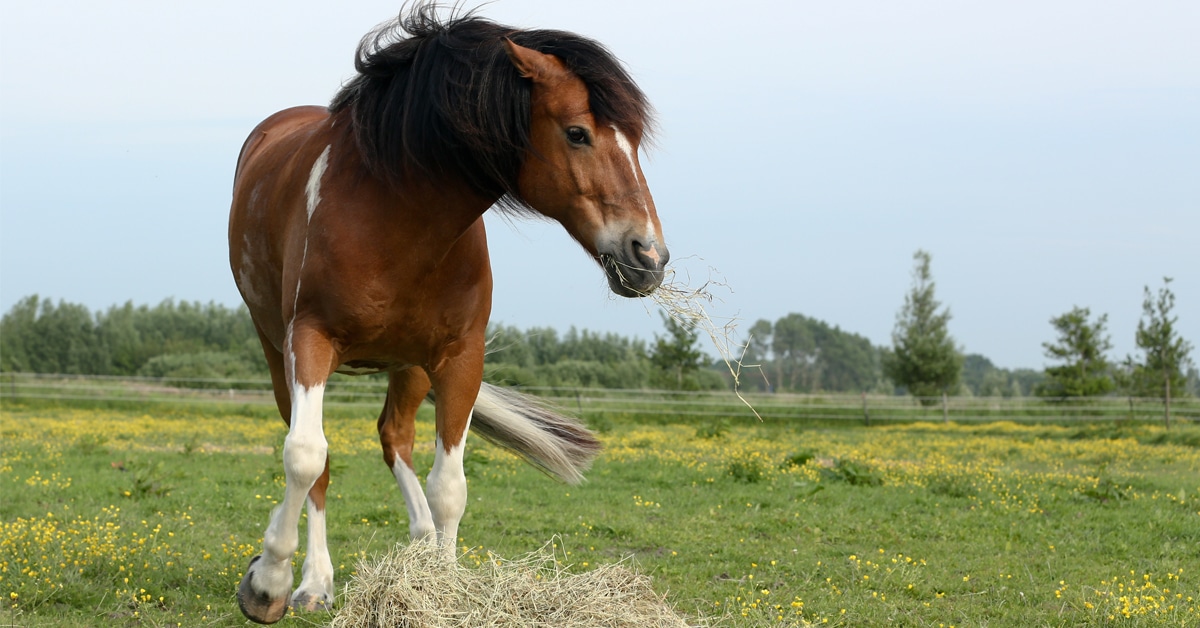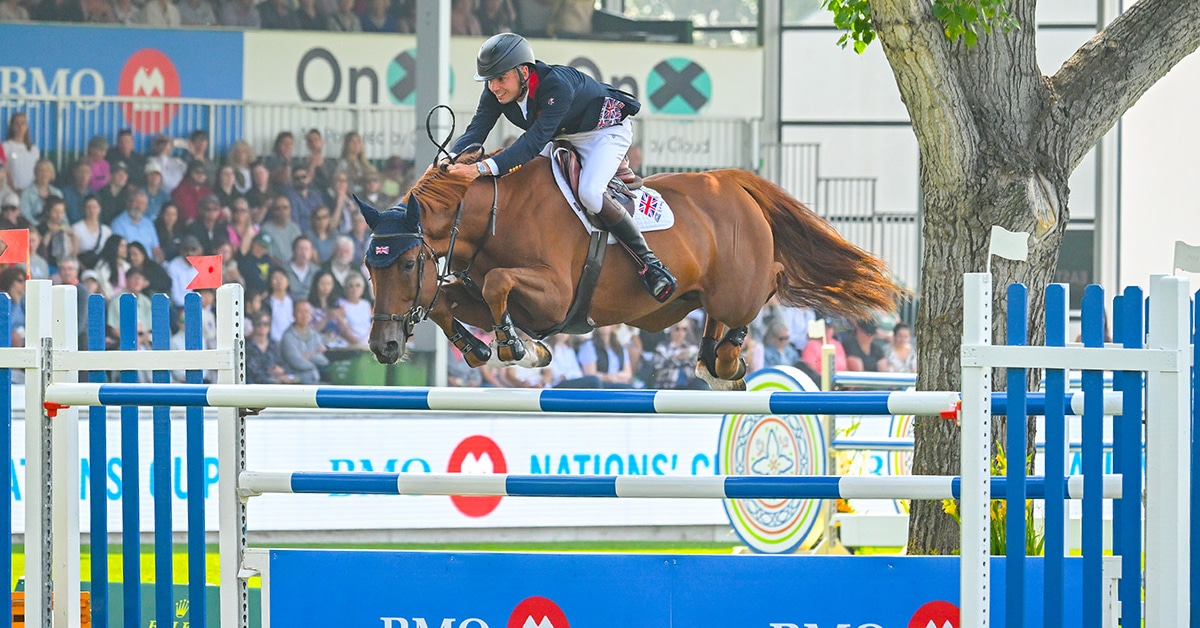Insulin is a hormone that is produced by the pancreas. Its actions are widespread and profound on the body and they mostly target metabolism of sugar and starches (carbohydrates), fats and proteins. It is required by most cells in the transport of glucose across the cell membrane and the pancreas releases it in response to elevations in blood glucose. More is needed when foods high in carbohydrates are digested and less is needed during exercise and physical activity. Insulin resistance (IR) is a condition in which the cells become less sensitive to the effects of insulin. Cellular receptors for insulin do not properly respond to insulin and the pancreas produces more in order to keep blood glucose (sugar) levels controlled.
A major point to understand is the ‘disconnect’ between calories consumed and calories utilized. When horses consume more calories than they need, they store the calories as fatty tissue. When they are burning more calories than they are fed, they utilize these fat reserves for energy. When the balance between calories consumed and calories used is upset, the horse is at risk for metabolic problems, including insulin resistance. A diet high in sugar and starch increases the risk.
Insulin Resistance & Insulin Dysregulation are Complex Conditions
True insulin resistance can only be assessed by using the euglycemic-hyperinsulinemic clamp technique, which quantifies how much glucose is taken up by the tissues in the face of artificially elevated concentrations of insulin, or by using mathematical modeling following a glucose and insulin tolerance test.
The phrase “insulin dysregulation” (ID) is becoming more common, as it refers to horses that either have true insulin resistance (as diagnosed by the aforementioned tests), or that have hyperinsulinemia (high insulin concentrations) either while fasting or following an oral sugar test or high sugar meal.
Hyperinsulinemia may be determined by using a simple blood test while a horse has only had access to hay, but no grain, within four to six hours. A truly fasted horse (no hay either) should have insulin concentrations less than 10 uU/ml, while following hay only, most healthy horses will have insulin concentrations lower than 20 uU/ml (the “cut off” for ID suspected horses). Horses that are above 20 uU/ml, but lower than 50 uU/ml, likely have some type of ID, and more testing (such as an oral sugar test) may be recommended by your veterinarian. It is not uncommon for some severely affected horses to have resting insulin concentrations of over 300 uU/ml and upwards of 800 uU/ml following a meal.
Insulin becomes elevated when glucose is not leaving the tissues as it should in the presence of insulin, so the pancreas produces more and more insulin in attempt to manage blood glucose concentrations. Insulin resistance refers to the inability of insulin to exert its effect of facilitating glucose transport from the bloodstream into tissues such as muscle and adipose (fat).
We worry about insulin resistance and dysregulation, as these have been associated with an increased risk of laminitis as well as colic and loss of stamina and muscle tone. The term equine metabolic syndrome (EMS) describes these IR/ID/laminitic-risk horses that also present with adiposity, and/or abnormal blood fats (dyslipidemia). Adiposity may be general (all over the whole body) or regionalized (such as a cresty neck), and can be described using both body condition scoring (BCS) and cresty neck scoring (CNS). Commonly, these horses are considered easy keepers.
Body condition scoring uses the 1-9 Henneke scale where a 1 represents a fully emaciated horse, while a 9 is a grossly obese horse; a score below 6 represents an over-conditioned horse, while a score above 7 represents an overweight horse.
The Cresty Neck system developed by Carter uses a 0-5 scale to describe the fat accumulation at the crest of the neck, where a 0 is a horse with no crest, and a horse with a 5 has so much fat it folds to one side.
It is important to note that some horses present with ID/IR with a lean body condition, while some horses that may be obese can have normal insulin and glucose concentrations. For example, genetics (pony breeds, Andalusians or Paso Finos) may have a lean body condition, but may still be at risk of laminitis/EMS. In contrast, show hunters that are more favourably judged when at slightly higher body condition scores, but that are also in moderate to heavy work may have normal insulin dynamics.
Feeding Recommendations for Horses with Insulin Resistance
Obesity is not only a contributing factor to EMS and ID, but can also put additional strain on limbs and joints, result in heat intolerance and can affect fertility in mares. Therefore, any overweight horse (greater than 7 on the 1-9 Henneke scale), EMS/ID or not, should be fed and managed to facilitate weight loss. The first step is to remove all “grain” or concentrate fed to the horse. Such feeds are fed to provide calories (energy) to the horse, which it does not need, because it has loads of energy stored as fat already. Instead, the diet should be balanced with good quality (but ideally low calorie) hay, a vitamin/mineral supplement and a protein supplement if warranted. Feed balancers can be helpful in some situations, but because these are still fed in the 500g (~1lb) range, they can still contribute to calorie intake.
For overweight horses, it is recommended that calories come from hay or other high fibre forage alternatives (such as hay cubes or pellets) alone to maximize the hay we can feed them and to provide vitamins/minerals in a granular form in amounts lower than 100 grams per day. For many horses, simply removing the grain will help facilitate weight loss, particularly if accompanied by exercise. Some horses may also need to have hay restricted. A starting point would be to offer 1.5% of the horse’s current body weight as hay and decreasing as needed to achieve weight loss (without going below 1% of body weight). Some horses may need further restriction (less than 1% of body weight), but this should only be considered if the horse is under direct veterinary care.
All horses with EMS/ID should be fed a diet low in starch and sugar, as these are absorbed into the blood as sugar, which triggers insulin to be released from the pancreas. Hay should be analyzed for its starch and sugar content, reported as starch, non-structural carbohydrate (NSC), water soluble carbohydrate (WSC) and/or ethanol soluble carbohydrate (ESC). Ideally, the NSC (which is WSC + starch) should be less than 10%. If it is higher than 12% it should not be fed to these horses. Hay should also be soaked for 60 minutes to further reduce sugar content.
Horses with EMS/ID or at risk of laminitis based on genetics or that have had a bout of laminitis previously should not have any access to pasture, as it is rich and variable in its sugar content. Because such restrictions can have an impact on equine behaviour, it is recommended that forage is provided for in a slow feeder design and enrichment (i.e. toys, no sugar licks though!) be provided as well as access to a grass-free exercise yard. Body condition scores and morphometric measurements (heart girth circumference, belly girth circumference) should be taken every two weeks and diets adjusted based on progress.
Those lean horses (BCS less than 5.5) that still have some ID/IR should be fed a diet of 1.5-2% of body weight hay to maintain a good body condition score, with additional calories coming from a low NSC grain (typically a higher fat and higher fibre) and/or feeds such as beet pulp or rice bran without molasses.
It is also important to note that exercise is one of the best management tools for EMS/ID horses. Exercise not only burns calories, but also helps with glucose metabolism, and, therefore, offers a double-whammy of support for those overweight and ID horses. Of course, horses that are actively laminitic should not be exercised. Those horses with lameness may consider options such as swimming pools to get non-weight-bearing exercise. Gradually increasing the degree of intensity of the exercise (sessions per week, length of each session, workload in each session) – as appropriate to the horse’s soundness and fitness, will have a more significant impact.
Lastly, it should be noted that owner’s and manager’s efforts to follow dietary and management guidelines to promote weight loss and improved glucose dynamics play a significant role in the outcome for the horse with regard to performance and quality of life. When overweight horses were provided with individual weight-loss strategies by a nutritionist and an exercise plan by a veterinarian, the degree of compliance by the owners/managers had the largest impact on the actual weight loss by the horses.
The Latest









